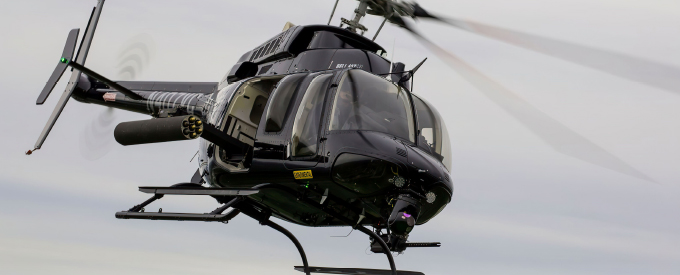2024-05-03
Kiowa Evolves into a Modern Multi-Role Marvel
The legacy of the Kiowa Warrior traces back to its predecessor, the OH-58A, which was introduced in 1968. This aircraft laid the foundation for what would become an iconic series of helicopters known for their capability and ruggedness.
Kiowa Warrior Legacy
In a remarkable display of precision and unity, 32 Bell OH-58D Kiowa Warriors took to the skies on April 15, 2016 over Fort Bragg, U.S., forming an awe-inspiring formation.
The feat not only showcased the skill and expertise of the pilots but also secured a place in the Guinness World Records for the Largest Helicopter Formation Flight in history.
Organised by the 1st Squadron, 17th Cavalry Regiment, 82nd Combat Aviation Brigade of the U.S. Army, the event was a grand tribute to the U.S. military fleet and the invaluable contribution of the Kiowa Warrior platform.
Over the years, the Kiowa underwent two significant rounds of modifications and upgrades. By the time the OH-58D took to the skies in 1983, it boasted a formidable combination of an upgraded engine and transmission.
Distinctive in its design, the OH-58D was a single-engine, four-bladed armed reconnaissance helicopter that broke new ground in technology. It was the first U.S. Army helicopter to feature an all-glass cockpit, revolutionising the pilot’s interface with the aircraft.
This advanced cockpit provided enhanced situational awareness, allowing pilots to operate more effectively and safely.
Additionally, the OH-58D incorporated a Wire Strike Protection System (WSPS), a feature born out of the necessity to safeguard against wire and power line strikes during its typically low-altitude missions.
The WSPS was a groundbreaking innovation that proved immensely successful in enhancing the safety of helicopter operations. Its effectiveness was so profound that it was later adapted and integrated into virtually every other helicopter in the U.S. military fleet.
The evolution of the Kiowa Warrior, from the OH-58A to the world-record-setting OH-58D, exemplifies the commitment to innovation within the U.S. Army’s aviation branch.
Extensive Production
The production history of the Kiowa Warrior spans several decades, resulting in a total of approximately 2,325 aircraft being manufactured. This extensive production run culminated with the delivery of the final new-build platform to the U.S. Army in 1989.
Throughout its operational life, the Kiowa Warrior served as a stalwart asset for the U.S. military, playing crucial roles in reconnaissance, surveillance, and armed escort missions. Its versatility and reliability made it a trusted companion for troops on the ground.
Despite its storied history and significant contributions, the time eventually came for the Kiowa Warrior to phase out of active service in the U.S. The last of these iconic helicopters were retired from active duty in 2020, marking the end of an era.
This retirement was not just a reflection of the Kiowa Warrior’s age but also a strategic decision aligned with the evolving needs and advancements in military technology.
For Bell and its customers, the legacy of the Warrior continues to thrive through the Bell 407M. This aircraft stands as the vanguard of Bell’s Special Missions Aircraft, drawing inspiration from its esteemed commercial platforms while boasting enhanced multi-mission capabilities.
The Bell 407M represents a seamless blend of proven technology and innovation, ensuring that the spirit of the Warrior’s lineage endures in this new era of aviation.
Rapid Reconfigurability
Reconfigurable in just 30 minutes, the 407 is the world’s most cost-effective, multi-role helicopter, building on the proven features from the OH-58 and its two-million flight hours with more than 750,000 being flown in combat.
With capabilities that range from public safety, Helicopter Emergency Medical Services (HEMS) and utility, to armed multirole including light attack, special ops, reconnaissance, command and control and anti-piracy, the Bell 407 is already well-established globally.
In the 407’s commercial configuration it has achieved more than six million flight hours over its 1,100-strong fleet.
As this next generation of aircraft graces the skies, it’s likely we’ll see them not only meeting but potentially setting more world records in the future.
For over 85 years, Bell has been a trailblazer in aviation, from breaking the sound barrier to introducing advanced tiltrotor systems. Headquartered in Fort Worth, Texas, and a subsidiary of Textron Inc., it shapes the future of global air mobility.
Textron Inc. is a diverse multi-industry leader, offering solutions through its brands like Bell, Cessna, and Textron Systems.


No Comments